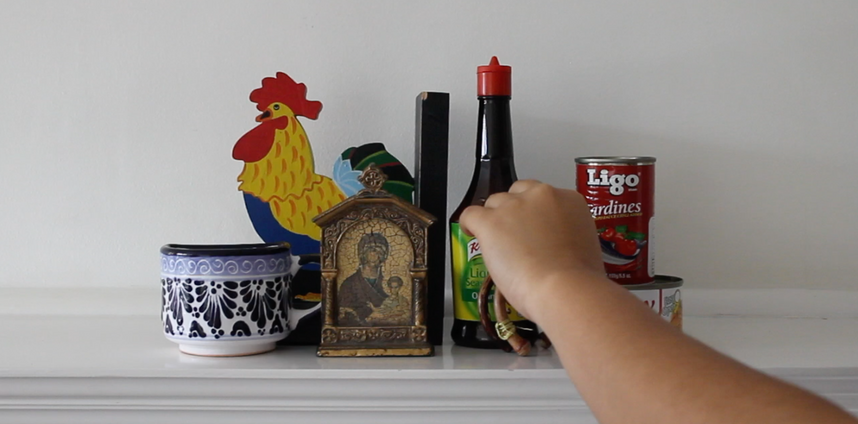Your Memory Tastes Like Lemon and Honey
3 - channel standard definition videos of testimony participants, 12:00 minutes (looped),
testimony voice over by Ana Garcia, 5:15 minutes (looped)
Everything is so green here
Collected photos, 1220 mm x 1220 mm acrylic sheets, fishing wire, steel rivets
Assimilate.
Single channel video of familiar objects from testimony participants,
Actions made by sisters Lucia Garcia and Ana Garcia,
7:34 minutes (looped)
What if I stayed?
What about the family I left behind?
Was it really better for us?
How much should I forget?
How much should I absorb?
The weight of these questions are constantly pushing and pulling within a migrant’s life. This dilemma underpins the journey of duality millions take for themselves and their families.
Reflecting on the stages of my family’s experience adjusting to life in New Zealand, I traversed the line between personal and universal narratives. Stories collected and contributed by fellow migrants in my New Zealand community are portrayed through a range of audio testimonies, photographs and familiar objects. In placing these narratives alongside each other, the lines are blurred between whose story is whose. The focus shifts from a distinct person and voice to one that is collective.
According to theorist Stuart Hall in his text Cultural Identity and Diaspora, 1990, such identity is “a matter of ‘becoming’ as well as of ‘being’. It belongs to the future as much as to the past.” Each person is individual and traverses a unique path. We cannot ignore the past, nor the questions that arise in the present. However, these differences do not completely define us either. In finding comfort in a common struggle, unity can arise between migrants and also our communities. Maybe in discovering this common ground, the question is no longer “Who am I?”, but “Who can I become?”



























